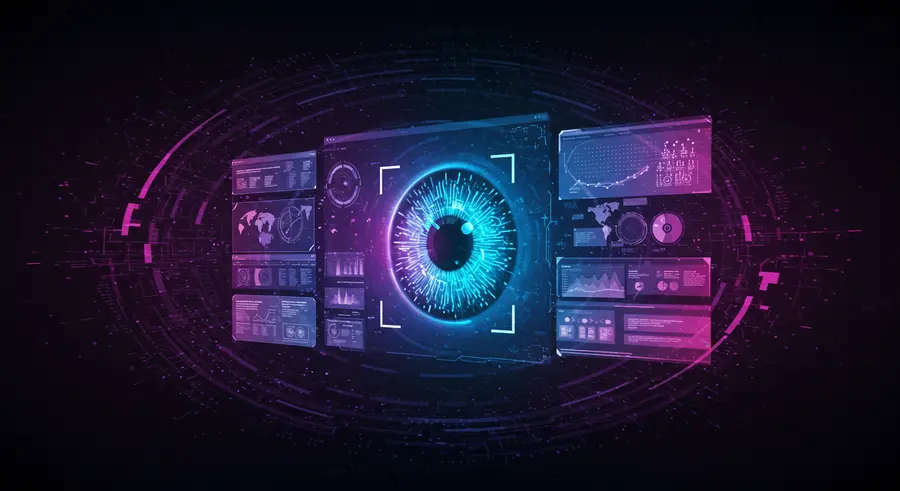Appearance

Welcome, innovators and web enthusiasts! 👋 Today, we're peering into the exciting intersection of Computer Vision and Web Development, amplified by the intelligence of Artificial Intelligence (AI). Imagine a web that doesn't just display information, but understands it visually – recognizing objects, faces, gestures, and even emotions. This isn't science fiction; it's the rapidly evolving reality powered by computer vision and AI.
What is Computer Vision? 🧠
At its core, computer vision is a field of artificial intelligence that enables computers and systems to derive meaningful information from digital images, videos, and other visual inputs. It's about teaching machines to "see" and interpret the visual world, much like humans do.
The AI Advantage in Computer Vision for Web 🚀
While computer vision has been around for a while, the integration of AI, especially with advancements in deep learning and neural networks, has supercharged its capabilities. For web development, this means:
- Enhanced Accuracy: AI models can process vast amounts of visual data, learning complex patterns and achieving highly accurate recognition tasks.
- Real-time Processing: Modern AI techniques allow for near real-time analysis of video streams, crucial for interactive web applications.
- Scalability: Cloud-based AI services make it possible to integrate powerful computer vision capabilities without needing extensive local infrastructure.
- Accessibility: AI tools are becoming more user-friendly, allowing web developers to integrate sophisticated visual features with less specialized knowledge.
Transforming Web Experiences with Computer Vision & AI 🌐
How can we leverage this powerful combination to create truly engaging and intelligent web applications? Let's explore some captivating use cases:
1. Smart Image and Video Content Management 🖼️
Forget manual tagging! AI-powered computer vision can automatically analyze and categorize images and videos uploaded to your website.
- Automatic Tagging: Identify objects, scenes, and activities within media to generate relevant tags, improving searchability and SEO.
- Content Moderation: Automatically detect inappropriate or harmful content in user-generated uploads, ensuring a safe online environment.
- Smart Cropping & Resizing: Intelligently crop and resize images based on the most important visual elements, ensuring optimal display across devices.
2. Personalized User Experiences ✨
Imagine a website that adapts to each user based on their visual cues.
- Emotion Recognition: Tailor content or recommendations based on a user's detected emotional state (e.g., offer calming content if stress is detected).
- Age and Gender Estimation: Customize marketing messages or product displays to specific demographic groups.
- Accessibility Enhancements: For users with visual impairments, computer vision can describe images verbally, making the web more inclusive.
3. Interactive and Immersive Web Applications 🎮
Bring new levels of interactivity to your web apps.
- Gesture Control: Allow users to navigate or interact with web elements using hand gestures detected via their webcam. Think touchless kiosks or immersive games.
- Augmented Reality (AR) on the Web: Overlay digital information onto the real world directly through the browser. Try on virtual clothes, preview furniture in your home, or explore interactive maps.
- Facial Recognition for Authentication: While requiring careful ethical consideration and robust security, facial recognition can offer a seamless login experience.
4. E-commerce Innovation 🛍️
Computer vision can revolutionize the online shopping experience.
- Visual Search: Upload an image of an item you like and find similar products within the e-commerce store.
- Virtual Try-On: Allow customers to virtually try on glasses, makeup, or clothing using their webcam.
- Product Quality Control: For sellers, computer vision can automate checks for product defects in images.
5. Real-world Examples and Inspiration 💡
To truly grasp the potential, explore some existing applications of computer vision. Our catalogue entry on Real-World Computer Vision Examples provides a deeper dive into practical implementations across various industries.
Getting Started: Tools and Considerations 🛠️
Integrating computer vision into your web projects is becoming increasingly accessible. Many cloud providers offer AI/ML services (like Google Cloud Vision AI, AWS Rekognition, Azure Cognitive Services) that expose powerful computer vision APIs. Libraries like OpenCV.js (for client-side processing) and frameworks for building AI models (TensorFlow.js, PyTorch) also provide powerful capabilities.
Key Considerations:
- Privacy and Ethics: Be extremely mindful of user privacy when collecting and processing visual data, especially facial data. Ensure transparency and obtain explicit consent.
- Performance: Client-side processing can be resource-intensive. Optimize models and choose the right balance between client and server-side processing.
- Data Quality: The accuracy of your computer vision models heavily relies on the quality and diversity of your training data.
The Future is Visually Intelligent 🌟
The convergence of computer vision and AI is unlocking unprecedented possibilities for web development. From creating more accessible and personalized experiences to fostering entirely new forms of interaction, the visually intelligent web is here to stay. Embrace these powerful technologies, experiment responsibly, and build the future of the web!
What exciting computer vision applications do you envision for the web? Share your thoughts in the comments below! 👇